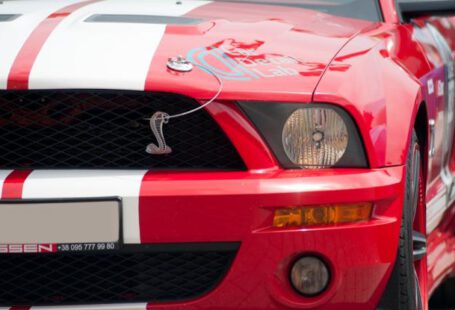Since its debut in 1964, the Ford Mustang has been an iconic symbol of American muscle cars. Over the decades, the design of the Mustang has undergone significant transformations, reflecting the changing trends in automotive aesthetics and technology. Let’s delve into the evolution of the Mustang design from its inception to the present day.
**The Classic Era (1964-1973)**
The first-generation Ford Mustang, also known as the “classic era,” was introduced in 1964. Designed by Gale Halderman, the Mustang featured a long hood, short deck, and a sporty fastback profile. Its distinctive grille, tri-bar taillights, and side scoops became instant trademarks of the Mustang brand. The design was a fusion of elegance and power, capturing the essence of the 1960s automotive styling.
As the 1960s progressed, the Mustang design evolved with the introduction of various performance-oriented models like the GT and Shelby versions. The Mustang’s design language continued to emphasize its aggressive stance and muscular proportions, solidifying its reputation as a high-performance sports car.
**The Malaise Era (1974-1993)**
The oil crisis of the 1970s led to a shift in automotive design priorities, with an emphasis on fuel efficiency and emissions compliance. The second-generation Mustang, introduced in 1974, reflected this changing landscape with a downsized and more aerodynamic design. The iconic fastback silhouette was replaced by a notchback coupe and hatchback variants.
During this period, the Mustang design underwent several iterations to meet regulatory requirements and consumer preferences. The introduction of the Mustang SVO in the 1980s marked a return to performance-oriented design cues, such as functional hood scoops and aerodynamic enhancements. Despite the challenges of the malaise era, the Mustang design continued to adapt while retaining its core identity as a symbol of American performance.
**The Modern Era (1994-Present)**
The launch of the fourth-generation Mustang in 1994 marked a revival of the iconic pony car with a return to its classic design roots. The retro-inspired styling cues, such as the prominent grille, round headlights, and sculpted body lines, paid homage to the original Mustang while incorporating modern design elements.
Subsequent generations of the Mustang continued to evolve, embracing contemporary design trends and advanced technologies. The introduction of the fifth-generation Mustang in 2005 brought a more aggressive and aerodynamic design language, with a focus on performance and handling capabilities. The sixth-generation Mustang, introduced in 2015, further refined the design with sleeker lines, improved aerodynamics, and enhanced interior features.
The latest iteration of the Mustang, the seventh-generation model unveiled in 2022, represents the pinnacle of Ford’s design and engineering prowess. With its bold styling, innovative technologies, and electrified powertrain options, the new Mustang sets a new benchmark for performance and sustainability in the automotive industry.
**Innovations and Future Trends**
Throughout its evolution, the Ford Mustang has been at the forefront of automotive innovation, pioneering new technologies and design concepts. From the introduction of turbocharged engines to the integration of advanced driver-assistance systems, the Mustang continues to push the boundaries of performance and design.
Looking ahead, the future of the Mustang design is poised to embrace electrification and autonomous driving technologies. With the upcoming release of the all-electric Mustang Mach-E and the promise of autonomous driving features, the Mustang is set to redefine the automotive landscape once again.
**The Ever-Evolving Icon**
In conclusion, the Ford Mustang’s design evolution reflects a journey of adaptation, innovation, and timeless appeal. From its classic roots in the 1960s to its modern interpretation in the 21st century, the Mustang has remained a symbol of American automotive ingenuity and passion. As the automotive industry continues to evolve, the Mustang’s design legacy will undoubtedly inspire future generations of enthusiasts and set new standards for performance and style.





